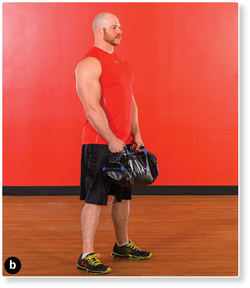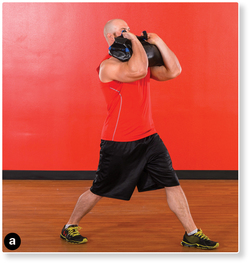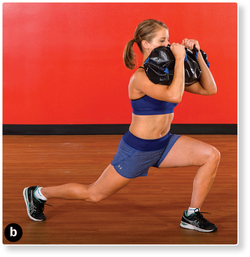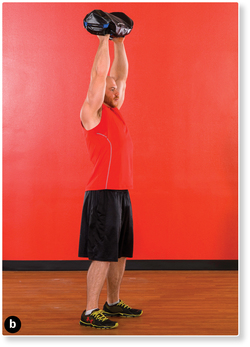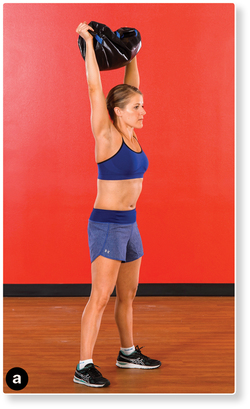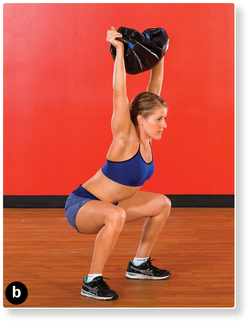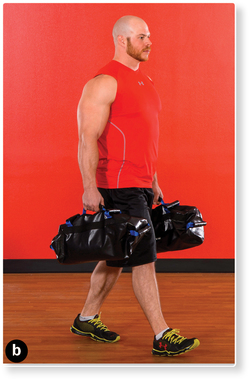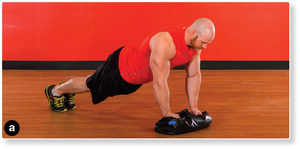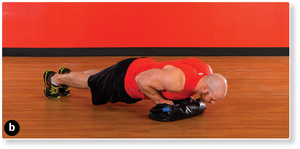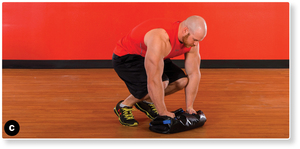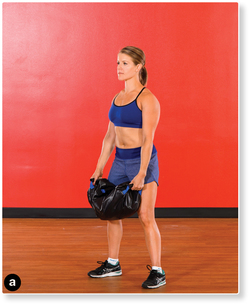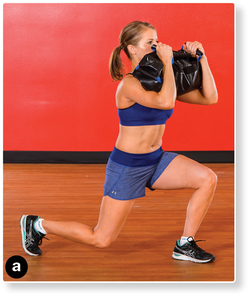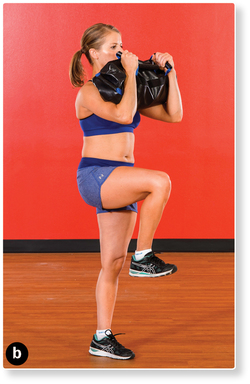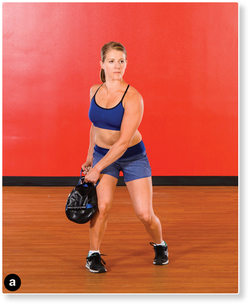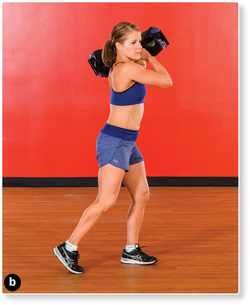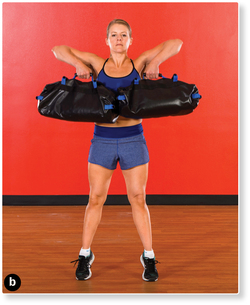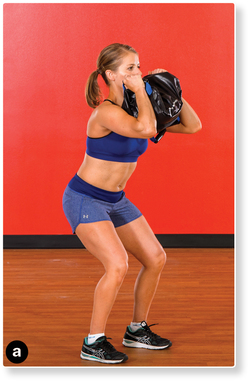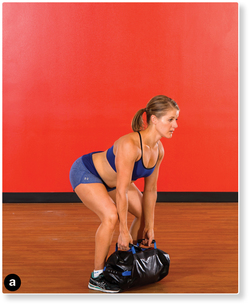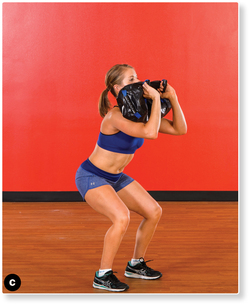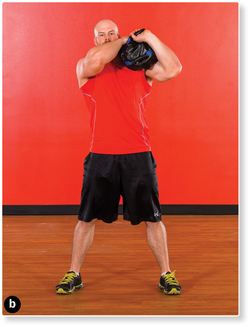Getting Started
Sandbags lend themselves well to performing a wide variety of basic and more complex exercises. After perfecting the basic exercises, you can add more elements to your routine by combining exercises to make combination movements. For example, the clean exercise can be combined with the front squat followed by the overhead press to create a total-body exercise. Another combination could involve performing a Romanian deadlift and immediately transitioning into a high pull or upright row. In table 9.1 you will find some combinations movements that work well together. Including complexes is another way to create a fun and challenging workout. Complexes consist of several (generally four to six) exercises performed in sequential order for a set number of repetitions before you move to the next exercise. Table 9.1 provides sample complex workouts that you can use after you have mastered basic exercise techniques and improved your fitness.
When creating various movement combinations, or complexes, a few key points should be considered.
- Make certain that you are able to transition smoothly from one exercise to the next. Use similar hand grips so that you do not waste time transitioning from one grip to another.
- Adjust the training load based on the weakest exercise movement in the combination or series. For instance, in most cases people are able to squat more than they can overhead press. Therefore, if you create a combination movement using these two exercises, you would be limited to the weight you could use to perform the overhead press safely for the desired number of repetitions.
- Do not put the sandbag down until you have completed the entire set or complex. Holding the sandbag throughout the set or complex increases the metabolic demands and builds endurance in the muscles used for gripping.






